2024 Subaru WRX stickshift showdown: Limited vs TR

The past decade has seen the accelerating demise of affordable fun cars, so when a mainstream manufacturer says it’s going to expand its stable of performance models — even when it’s something as simple as a new trim like the 2024 Subaru WRX TR — we stand up and take notice.
From where we sit, it looks like Subaru is still trying to figure out exactly where the WRX stands in this shrinking field of sport compacts. Without a halo model above its rally-inspired sedan, that leaves plenty of proverbial white space for the company’s performance arm to explore. From that space, Subaru plucked the “Tuner Ready” WRX. What is it, and how does it compare to the standard WRX?
STI
To the great relief of reproductive health advocates everywhere, Subaru is no longer in the business of pumping out STIs. That’s bad news for those of us who already have the performance itch and would like to scratch it. Prodrive teased us with some aftermarket parts last year, prompting us to ask Subaru whether something similar might be in the works from the factory. With tight smiles and half-hearted shrugs, we were told they had nothing to say … until one day they did.
But the TR is as much defined by what it doesn’t include as by what it does. While it offered other enticements, the STI had two core things going for it: an upgraded AWD system and a bunch more power. The TR has neither. Even the Prodrive prototype got a modest bump over the WRX’s factory output, but the TR carries over the base car’s 271-horsepower tune unchanged; even the exhaust was untouched. Both weigh almost exactly 3,400 pounds. There’s also one major equipment delete: the sunroof. If you’re taller and need room for a helmet, that’s all upside.
What you do get is a series of chassis upgrades designed to aid you in the early days of your track-day aspirations. Subaru fitted some Brembo brakes (six-piston front; two-piston rear) with larger discs and calipers, and a larger master cylinder for improved heat management and track longevity. The steering rack, spring stiffness and damping rates were also tweaked to reduce body motions and improve steering response without sacrificing ride quality, even on the new 19-inch wheels wrapped in Bridgestone Potenza S007 summer performance tires. Inside, you get a set of beefed up Recaro seats with branding to match. This is the only way to get them in a WRX with a manual transmission in 2024; your alternative is the CVT-only GT.
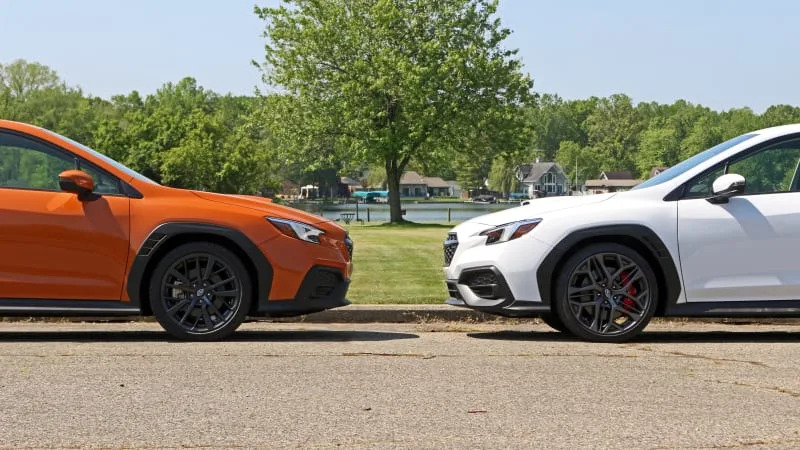
For a limited time only
Barely a week after we’d sent the TR back to Subaru, we learned that the trim will be discontinued entirely for 2025. It will be superseded by the tS, which gets pretty much the same treatment as the TR, only with the added benefit of the GT’s swanky adaptive suspension and integrated drive modes. It will cost more than the TR, but we don’t yet know how much.
So that makes the TR a single-model-year proposition. With the tS on the horizon, is this lame duck sport sedan worth plunking down your hard-earned cash, or is it nothing more than a placeholder for something truly special? That’s precisely what we set out to determine.
Your drivers today are Senior Editor John Beltz Snyder and your author, Associate Editor Byron Hurd. You may recognize us from our previous comparison, which admittedly involved far less sporty hardware. Beneath his electrified exterior, Snyder is a previous WRX owner and enduring fan; I, meanwhile, was a long-time skeptic who became a convert after driving the 2022. We’re both fans of this car as-is, so anything that leans into its sporty, go-fast-anywhere character sounds like a solid upgrade to us. And that’s essentially what the 2024 Subaru WRX TR is.
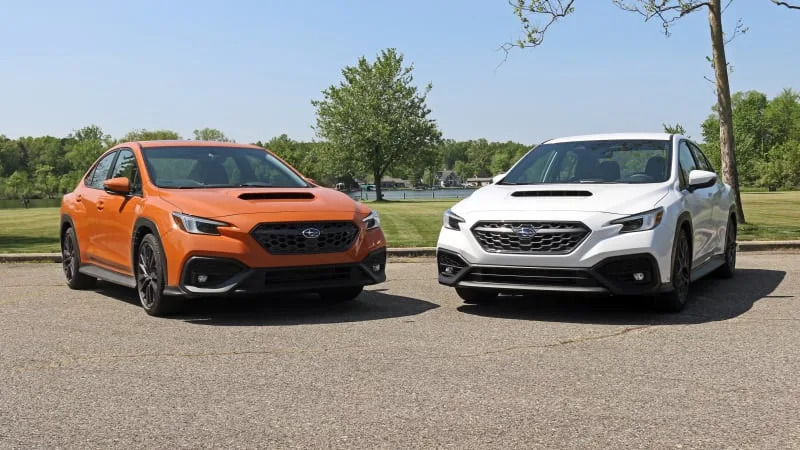
The test
Our test loop includes a back-road handling circuit, several stretches of interstate and state highway, along with an extensive surface-street drive in Ann Arbor, Michigan. Both drivers got to experience both cars in the same environments back-to-back, giving us each a snapshot of daily life behind the wheel of these machines.
There’s one more thing we need to point out before we get to the nitty-gritty. While the WRX TR Subaru loaned us was a 2024, the Limited in our long-term fleet is not; it’s a 2023 — mechanically identical, but lacking some feature updates that touched the entire WRX lineup this year. For the purposes of this comparison, we’re evaluating it based on what it would cost to purchase the same model in 2024. We also ignored the EyeSight driver assistance technology pack entirely in our comparison, as it is standard on all 2024 WRXs regardless of transmission.
The following scores are based on a 500-point total that gave double weight to critical categories (Acceleration, Braking, Handling, Steering, Ride, Gearbox, Front Seat Comfort and Driving Position, Value, and Fun to Drive). 500 points may seem like a lot in a vacuum, but as you’ll see from the results, any less granularity and this would have been too close to call.
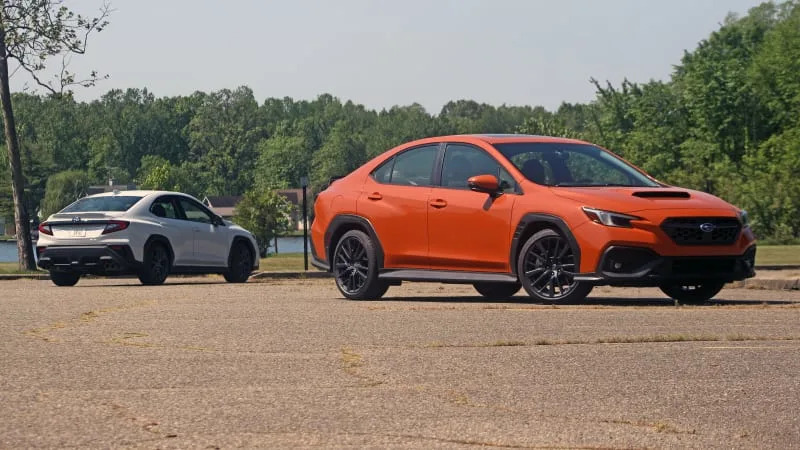
Second place: 2023 Subaru WRX Limited – 348 points
Driven back-to-back with the TR, the standard WRX’s flaws seem more glaring. It makes a lot more noise — tire, road — but not the kind you’d actually want, because the standard WRX and the TR share an exhaust system, and it’s not a very exciting one. Thanks to the WRX’s relatively short gearing and lack of serious sound deadening, the din of the boxer can be heard over the croaking of the Dunlops on most highway surfaces.
The upside to the WRX’s talkative character is that you always know exactly what the car’s various bits are doing. There’s never the sense that anything is happening outside of your awareness. If the throttle hesitates, you’ll hear it; if the front end washes, you’ll feel it. It telegraphs its limits far more readily than the TR, even if those limits are ultimately lower. The trade-off here is fatigue. Drive the WRX for long enough on poor surfaces and your fingers will feel like you put them through a rock tumbler. That said, it’s still a marked improvement over previous-generation WRXs.
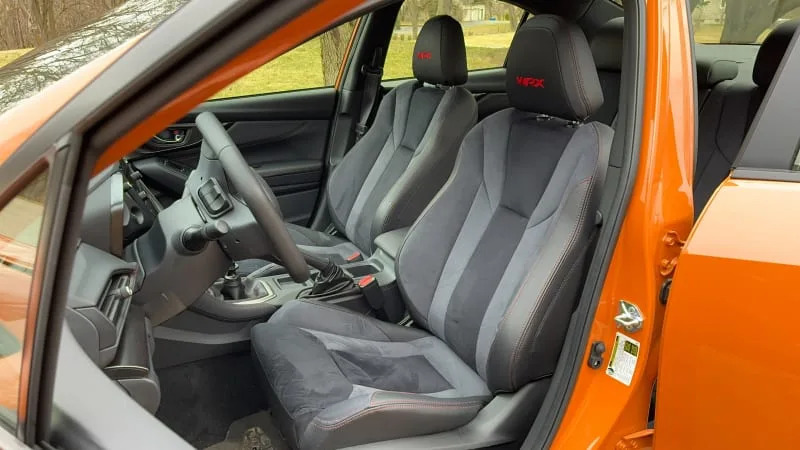
I just wrapped a six-week stint in this long-term 2023 WRX and thoroughly enjoyed it. It’s not without its flaws, but this is the kind of do-anything fun car that makes being an enthusiast less of a pain in mixed climates without giving up too much performance. And let’s face it, affordable performance cars are a dying breed. The Volkswagen GTI/GLI, Hyundai Elantra N and Honda Civic Si are all great sport compacts, but it’s difficult to beat the WRX’s all-around appeal at its base price ($33,855).
And that’s where the WRX shines: value. On both of our score sheets, the TR simply ran away with the comparison until it came to this category. Fact of the matter is, while our long-term WRX is a fairly well-equipped Limited model, the base car is mechanically identical, right down to the tires. This means the TR is competing with a car that fundamentally costs nearly $10,000 less. If our long-term car had been a Premium or Base rather than a Limited ($40,135), this test may have gone the other way.
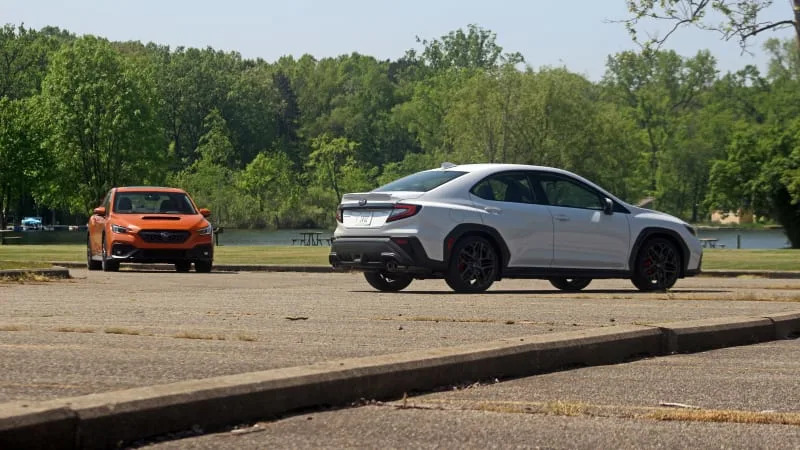
First place: 2024 Subaru WRX TR – 351 points
Subaru pushed the TR as an enthusiast platform with the basics — suspension, brakes, seats and tires — already in place. Remember, “TR” comes from “Tuner Ready.” If you’re like us and you expected the TR to be louder, rougher and rawer, well, nope. The opposite is true. In fact, if ride quality is your highest priority and you still want a manual transmission, skip the standard WRX entirely and go straight for the TR. The more we drove it, the more we broadened that thesis. It’s not just the ride quality that improves with TR, but virtually everything.
“The TR didn’t feel all that much better in the handling department at first blush,” Snyder said. “The gains here feel like they reveal themselves slowly. After a while, I found that maneuvering the same set of turns required a little less effort on my part. It was just easier to wrangle the TR down the curvy road for a long time. It’s subtle, but a lot of it comes down to grip.”
Grip, indeed. The more time we spent with it, the more convinced we became that the TR’s secret sauce is actually not a sauce at all, but a compound — a tire compound. As it turns out, Bridgestone originally engineered the Potenza S007 for the Ferrari F12berlinetta way back in 2012. A tire intended for an uber-luxury GT offers a surprising degree of refinement? Shocker.
The standard summer tire on the WRX is the Dunlop SP Sport Maxx GT 600A, and while it gets the job done just fine, it lacks both the S007’s composure and, we’d wager, its ultimate grip. The Bridgestone is taller than the Dunlop, but no wider. This results in a thinner sidewall for the same contact patch, which should not work at all in the Bridgestones’ favor, at least in theory.
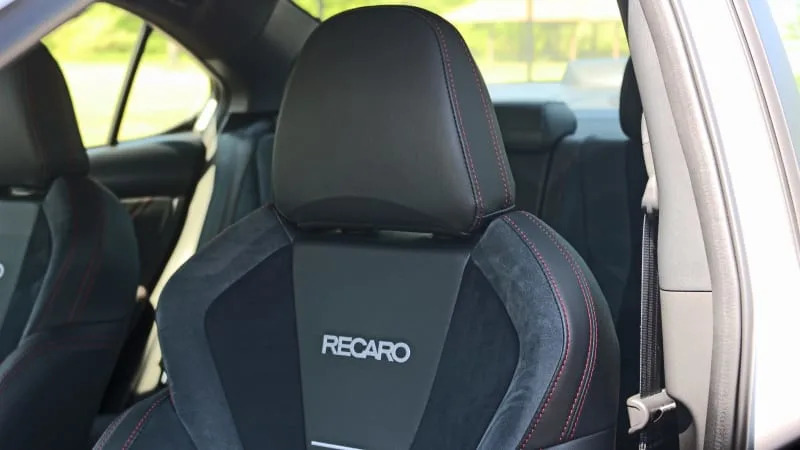
Well, some theories aren’t worth the time it takes to type them. None of the usual pitfalls of a shorter, stiffer sidewall reared their heads during our drive. The TR was simply better across the board. The only trade-off was in communication. Mostly, that was for the better. While the standard WRX teaches you to edit out the constant noise, the TR only speaks up when it matters. That means less chatter, which is great, but also less warning as you approach your limits.
“Spooky how easy it is to get speed creep vs. the base car,” I noted. “Quiet even over rough pavement. Can readily hear induction/spool noises with the radio off and windows up.”
Of the TR’s upgrades, only the Recaros truly received mixed reviews. I noted difficulty with finding a seat-bottom spot that suited me and bemoaned the lack of adjustable lumbar support. Snyder noted that the trade-off of getting Recaros but losing the optional sunroof may not be everybody’s cup of tea, even if we’d both option it that way.
But ultimately, we came away from the TR thoroughly impressed. It’s neither a game-changer nor a must-have, but it’s simply better than the standard WRX in every way but one: price. And that’s what nearly cost it this comparison. If you’re trying to decide between the Limited and TR, we suggest you open your wallet a bit wider.







